 |
SRGC Bulb Log Diary |
| Home Recommend This Site To A Friend |
|
BULB LOG 50 8th December 2003
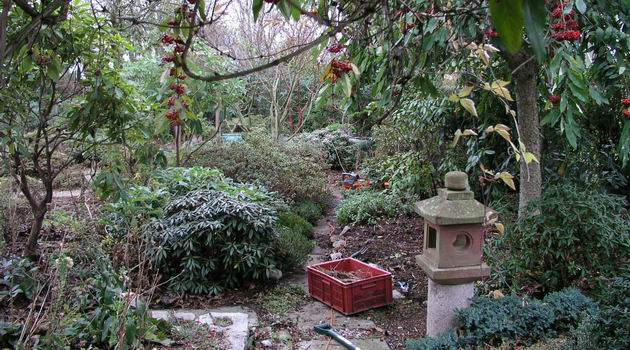
Garden view Whenever the weather permits we are still out tidying up the fallen leaves as you can see the cotoneasters have still a lot of leaves and berries on. I am always very sceptical about 'gadgets'- the world and garden sheds (not to mention kitchens) are full of useless devices that proclaim that they will revolutionise our lives and make tedious tasks into a simple pleasure - that was my take on these electric leaf-vac things. 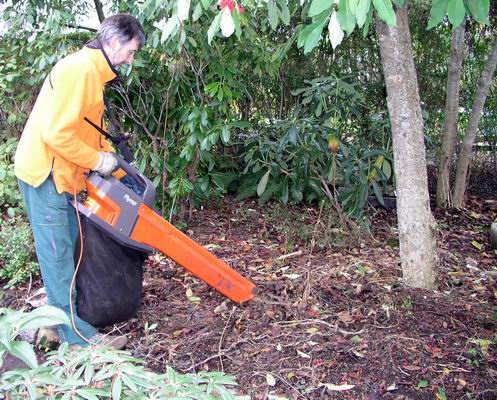
Leaf-vac To cut a long story short a few years back I was given some money to treat myself to something useful for the garden and it was just about this time of year when the ground was covered in wet, soggy leaves. I looked at the boxes of these contraptions, at the DIY store, and read carefully what they claimed to be capable of, I then got hold of the Manager and told him if I bought one and it did not do exactly as it said on the box I would want my money back. Within two minutes of using it I would have been prepared to go on TV and give it a glowing recommendation - it not only did what it said on the box but more. It will lift the wettest of leaves from paving slabs, lift leaves from gravel paths without lifting the gravel and best of all, you can suck the leaves off a bed without lifting the mulch or harming the plants. You can see in the bottom right hand corner of the picture the area that I have been over. 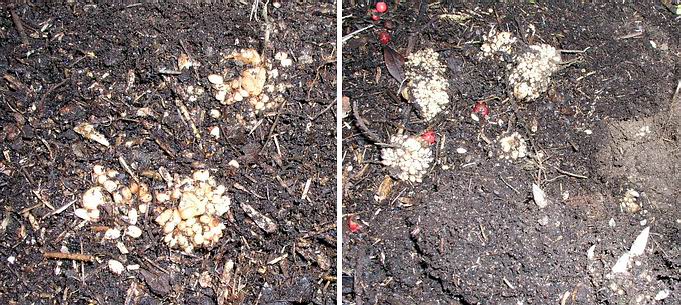
Dicentra cuccularia While some bulbs such as Erythronium take themselves deeper into the ground every year others like Dicentra cuccularia work their way to the surface. It is often when we are clearing the leaves that we find them breaking the surface - I just dig a hole and plant them back a bit deeper. 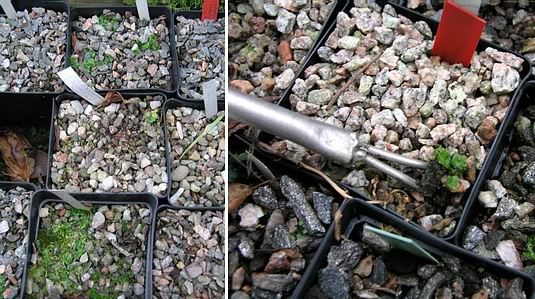
Seed pots & liverwort Another job for bright days is to check the seed frames and watch for growth of moss and liverwort. One of the most frequently asked questions is how to get rid of liverwort from seed pots and I have listened to all sorts of answers involving vinegar, Epsom salts, and a whole arsenal of noxious chemicals but I believe that there is only one remedy - to remove it by hand.(Green fingers = hard work) I have made a small two pronged tool (an old kitchen fork also works well) and I go round on a regular basis and remove all the moss and liverwort as soon as it appears. 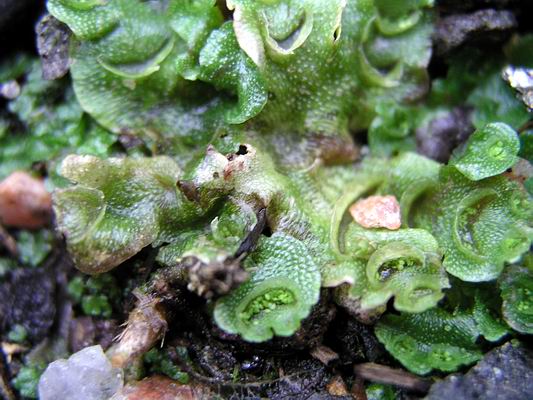
Liverwort close up Liverwort does form fruiting bodies and spreads by spores but it also produces little plantlets in 'splash pots' (you can see these towards the bottom left of the picture) and when it rains or when you are watering these plantlets splash around into adjacent pots and so the liverwort spreads rapidly through your frames. 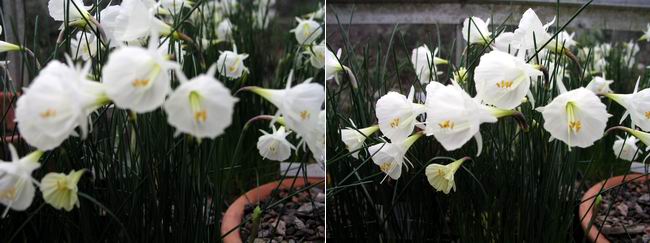
Auto focus Changing the subject completely to photography and looking at auto focus systems; you will immediately notice that the picture on the left is way off focus. This picture was taken using the auto-focus system of my new digital camera so what has gone wrong? Most camera auto-focus systems work on a 'contrast detection method' where it looks for the contrast between colours and/or tones. This system works well in most situations but falls down when it is pointed at a predominantly white subject in which there is little or no contrast. I switched to the manual focus option on my camera to get the right hand picture. Returning to making narcissus hybrids and collecting pollen. 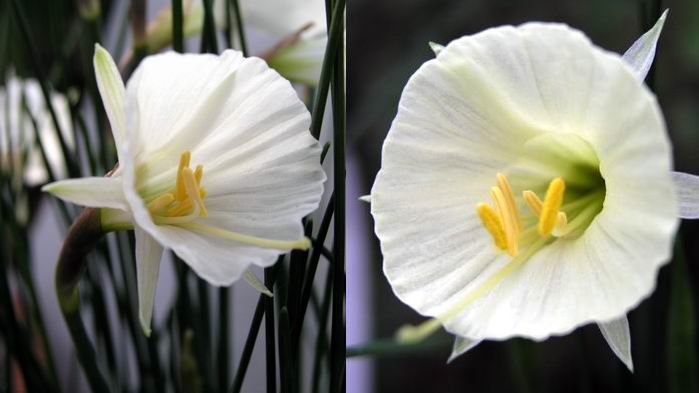
Narcissus pollen You will see from these two close ups that some of the anthers have dehisced and some have not, that is to say the pollen is ripe and exposed and ready for distributing. The trouble with making some narcissus hybrids is that while the pollen on some of the species is now ripe the species that will receive the pollen and become the other half of the cross may not even be in flower yet. 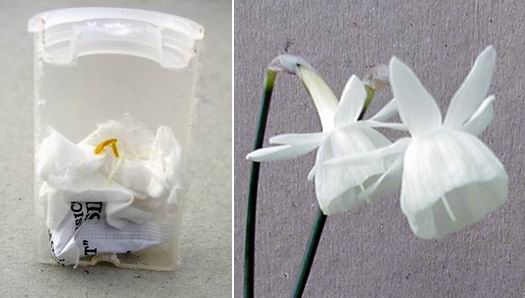
Saving pollen This is how I save the pollen to over come this problem. Collect the pollen by picking off the newly ripe stamens complete with pollen. I store the stamens in airtight plastic film canisters with some silica gel crystals (to keep the moisture level low) placed at the bottom, then a layer of tissue with the anthers on top of that. This container is then placed in a fridge, if I just want to save the pollen for a week or two, or into the freezer where it is preserved for some months.( I have cut the container in half to illustrate the layers.) This is how I managed to create this beautiful hybrid between N. cantabricus and N. romieuxii petunioides which do not normally flower at the same time of year in our garden. It is hard to believe that this is log 50 already, it does not seem that long ago that I wondered what I would find to say and show you every week of the year, it is just amazing how much interest the small bulbs can provide. I originally set out to do the bulb log for one year but after all the positive responses and encouragement that I have had I have been persuaded to continue for a second year - it would be nice if some more of you would sign our guest book or become active in the bulb log feed back on the forum pages. To close this weeks log I will leave you with a composite picture of some of the bulbs in flower today. 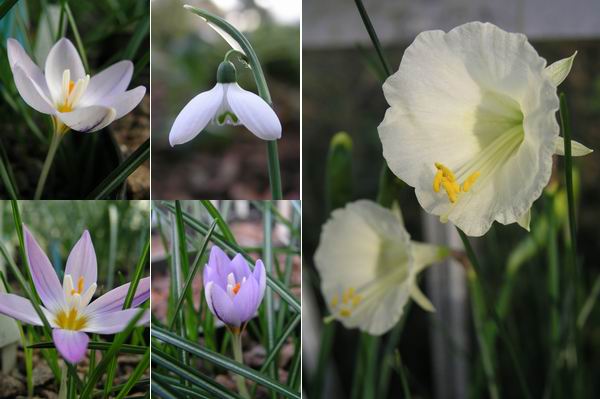
Crocus, galanthus & narcissus Three seed raised forms of Crocus laevagetus a Galanthus nivalis regine olge and another form of the variable Narcissus romieuxii. ^ back to the top ^ |